DIAMOND MOHS SCALE OF HARDNESS
DIAMONDS AND THE MOH'S HARDNESS SCALE
This post contains affiliate links. If you use these links to buy something I may earn a commission. Thanks! As an Amazon Associate I also earn from qualifying purchases.
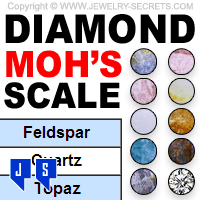
People are under the impression that Diamonds are the hardest object on Earth and because “You Can’t Break a Diamond“.
While this is half true, it’s far from being truthful.
Here’s why:
Diamond is the hardest NATURAL object on Earth, but man-made Objects like Nanorods are harder. Nanorods are a combination of Corundum and Diamond mixed together. But, if we’re talking about Natural Objects from the Earth, Diamond is KING!
Nothing Natural is Harder!
The hardness of an object is basically how scratch resistant that object is. This is tested by scratching two different objects together. The one that leaves a mark on the other is the harder substance.
Any object higher up the hardness scale will scratch any item that is lower, or softer.
This is why you can take your fingernail (2.5 on the Mohs Scale) and scratch plastic with it (1 on the Mohs Scale).
And speaking of Mohs scale, let’s take a look…
The Mohs Scale of Hardness
The Mohs Scale was developed by a German Mineralogist by the name of Friedrich Mohs back in 1812. He came up with a list of ten common minerals and rated them from weakest to strongest as far as their hardness and scratch resistance goes.
The Mohs Scale of Hardness is:
| 1: | Talc | 6: | Feldspar |
| 2: | Gypsum | 7: | Quartz |
| 3: | Calcite | 8: | Topaz |
| 4: | Fluorite | 9: | Corundum |
| 5: | Apatite | 10: | Diamond |
You can see that on the list that Diamond is a 10. This is not entirely true. This scale is a simplified scale to show the minerals in order from soft to hard, but in no way does it reflect just how strong the items actually are.
That scale is a much different scale. A list showing their true hardness is called the Absolute Hardness Scale, and that is shown below…
Absolute Hardness Scale
| Talc | 1 | Feldspar | 72 |
| Gypsum | 2 | Quartz | 100 |
| Calcite | 9 | Topaz | 200 |
| Fluorite | 21 | Corundum | 400 |
| Apatite | 48 | Diamond | 1600 |
Now that’s an eye opener!
Look at Diamond now. 1600!
It shows Diamond is 4 times harder than the next most natural item… Corundum.
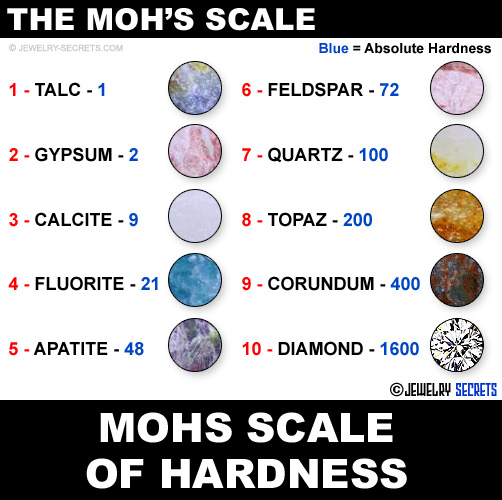
Corundum is the Parent Gemstone that Sapphire and Ruby comes from. It’s also the type of Watch Crystal that most fine Watches are made of to feature a scratch resistant face. :)
But the list doesn’t stop here!
It goes on and on…
It lists Minerals, Materials, Metals, and Gemstones from 1-10 on the scale.
It even lists common household items like Glass, Knife Blades, Flint, Pencil Lead and Plaster of Paris…
Any item in fact could be put on the Mohs Scale of Hardness.
Take a look at the extensive list below…
The Mohs Scale of Hardness
| Plastic | 1 | Nephrite | 6 – 7 |
| Graphite | 1 | Jade | 6 – 7 |
| Talc | 1 | Glass | 6 – 7 |
| Pencil Lead | 1 | Cassiterite | 6 – 7 |
| Sulfur | 1.5 – 2.5 | Iridium | 6.5 |
| Gypsum | 2 | Kunzite | 6.5 – 7 |
| Alabaster | 2 | Peridot | 6.5 – 7 |
| Rock Salt | 2 | Bloodstone | 7 |
| Plaster of Paris | 2 | Quartz | 7 |
| Mercury | 2 – 2.5 | Rose Quartz | 7 |
| Salt | 2 – 3 | Smokey Quartz | 7 |
| Amber | 2.5 | Milk Quartz | 7 |
| Ivory | 2.5 | Black Opal | 7 |
| Fingernail | 2.5 | Flint | 7 |
| Pearl | 2.5 | Aventurine | 7 |
| Zinc | 2.5 | Ametrine | 7 |
| Gold | 2.5 – 3 | Agate | 7 |
| Silver | 2.5 – 3 | Chalcedony | 7 |
| Aluminum | 2.5 – 3 | Citrine | 7 |
| Jet | 2.5 – 3 | Jasper | 7 |
| Copper Penny | 3 | Onyx | 7 |
| Calcite | 3 | Carnelian | 7 |
| Limestone | 3 | Amethyst | 7 |
| Shell | 3 | Tiger’s Eye | 7 |
| Bronze | 3 | Garnet | 7 – 7.5 |
| Coral | 3 | Rhodolite | 7 – 7.5 |
| Barite | 3 – 3.5 | Iolite | 7 – 7.5 |
| Malachite | 3.5 – 4 | Tourmaline | 7 – 7.5 |
| Azurite | 3.5 – 4 | Steel File | 7 – 8 |
| Fluorite | 4 | Zircon | 7.5 |
| Platinum | 4 – 4.5 | Tungsten | 7.5 |
| Iron | 4 – 5 | Morganite | 7 – 8 |
| Meteorite | 4.5 | Beryl | 7.5 – 8 |
| Palladium | 4.75 | Aquamarine | 7.5 – 8 |
| Apatite | 5 | Emerald | 7.5 – 8 |
| Tooth Enamel | 5 | Spinel | 8 |
| Lapis | 5 – 5.5 | Topaz | 8 |
| Obsidian | 5 – 5.5 | Smokey Topaz | 8 |
| Hematite | 5 – 6 | Blue Topaz | 8 |
| Knife Blade | 5.5 | Yellow Topaz | 8 |
| Opal | 5.5 – 6 | Chrysoberyl | 8.5 |
| Turquoise | 5.5 – 6 | Alexandrite | 8.5 |
| Magnetite | 5.5 – 6.5 | Cat’s Eye | 8.5 |
| Rhodonite | 5.5 – 6.5 | Cubic Zirconia | 8.5 |
| Titanium | 6 | Chromium | 8.5 |
| Rhodium | 6 | Tungsten Carbide | 8.5 – 9 |
| Feldspar | 6 | Corundum | 9 |
| Orthoclase | 6 | Sapphire | 9 |
| Rutile | 6 – 6.5 | Ruby | 9 |
| Fire Opal | 6 – 6.5 | Carborundum | 9 – 9.5 |
| Moonstone | 6 – 6.5 | Moissanite | 9.25 |
| Marcasite | 6 – 6.5 | Fullerite | 10- |
| Iron Pyrite | 6.5 | Diamond | 10 |
| Tanzanite | 6.5 | Nanorods | 10+ |
Gemstones & Metals Mohs Scale
When it comes to Jewelry, this scale is usually broken down into 2 categories: Gemstones and Metals. So let’s take a closer look…
Gemstones
Knowing the hardness of Gemstones is important because of the wear and tear and longevity that a stone can give.
The more durable a stone is, the more years you’ll have to enjoy it and pass it down from generation to generation.
Softer stones, like Emerald, Aquamarine and Tanzanite look great, cost a lot of money, but don’t hold up well over the long run. They will scratch, dull up, lose their shine and even crack or break easier than harder stones will (like Alexandrite, Sapphire, Ruby and of course Diamond – the Gemstone for April).
Take a look at the most common Gemstones on the Mohs Scale…
Gemstone Mohs Scale
| Amber | 2.5 | Agate | 7 |
| Ivory | 2.5 | Citrine | 7 |
| Pearl | 2.5 | Jasper | 7 |
| Jet | 2.5 – 3 | Onyx | 7 |
| Shell | 3 | Carnelian | 7 |
| Coral | 3 | Amethyst | 7 |
| Malachite | 3.5 – 4 | Tiger’s Eye | 7 |
| Azurite | 3.5 – 4 | Garnet | 7 – 7.5 |
| Lapis | 5 – 5.5 | Rhodolite | 7 – 7.5 |
| Obsidian | 5 – 5.5 | Iolite | 7 – 7.5 |
| Hematite | 5 – 6 | Tourmaline | 7 – 7.5 |
| Opal | 5.5 – 6 | Zircon | 7.5 |
| Turquoise | 5.5 – 6 | Beryl | 7.5 – 8 |
| Rhodonite | 5.5 – 6.5 | Aquamarine | 7.5 – 8 |
| Fire Opal | 6 – 6.5 | Emerald | 7.5 – 8 |
| Moonstone | 6 – 6.5 | Spinel | 8 |
| Marcasite | 6 – 6.5 | Topaz | 8 |
| Iron Pyrite | 6.5 | Smokey Topaz | 8 |
| Tanzanite | 6.5 | Blue Topaz | 8 |
| Jade | 6 – 7 | Yellow Topaz | 8 |
| Kunzite | 6.5 – 7 | Chrysoberyl | 8.5 |
| Peridot | 6.5 – 7 | Alexandrite | 8.5 |
| Bloodstone | 7 | Cat’s Eye | 8.5 |
| Quartz | 7 | Cubic Zirconia | 8.5 |
| Rose Quartz | 7 | Corundum | 9 |
| Smokey Quartz | 7 | Sapphire | 8.5 |
| Milk Quartz | 7 | Ruby | 9 |
| Black Opal | 7 | Moissanite | 9.25 |
| Ametrine | 7 | Diamond | 10 |
Metals Mohs Scale
Most Metals used for Jewelry are quite soft (2.5 on the Mohs Scale). This makes them malleable and easy to work with.
Metals in their pure state (no Alloys mixed) makes up and interesting list. You can see how durable Platinum is (4.5) against Tungsten (7.5)… That’s a big difference.
Who knew Titanium and Tungsten were really that tough?
This is why Titanium and Tungsten Wedding Rings can’t really be Sized. They have to be ordered in the correct size to begin with. Let’s hope you don’t gain weight and need to get them sized up… You’d have to purchase a brand new ring!
Metals Mohs Scale
| Lead | 1.5 | Platinum | 4 – 4.5 |
| Tin | 1.5 | Steel | 4 – 4.5 |
| Zinc | 2.5 | Iron | 4.5 |
| Gold | 2.5 – 3 | Palladium | 4.75 |
| Silver | 2.5 – 3 | Rhodium | 6 |
| Aluminum | 2.5 – 3 | Titanium | 6 |
| Copper | 3 | Hardened Steel | 7 – 8 |
| Brass | 3 | Tungsten | 7.5 |
| Bronze | 3 | Tungsten Carbide | 8.5 – 9 |
| Nickel | 4 | ||
Looking at this list it’s easy to see how putting a Platinum Ring up against a 14k Gold Ring will scratch the Gold and wear the Gold down.
The Harder Substance Wins!
Because these Metals are so soft, alloys are introduced and mixed with them to make them more durable, last longer, and be tough enough to securely hold your Gemstones and Diamonds in place.
14k Gold is actually 14 parts Gold and 10 parts Alloy. Alloys like: Nickel, Copper, Silver and Zinc. When people are allergic to Gold, it’s usually the Nickel Alloys they are Allergic to.
Metals are not normally rated with the Mohs Scale. They are usually rated with the Rockwell Hardness Test.
But since we’re dealing with Jewelry, Gold and Diamonds, the Mohs Scale is the easiest for most people and consumers to understand. 1-10 is a pretty simple scale.
Diamonds still Break
Diamond may be the most durable Gemstone there is, but that doesn’t mean they won’t Chip or Break like many people think.
Diamonds have Cleavage lines just like trees do. One good whack, hit, or strike and the Diamond could Break, Chip or Shatter.
The weakest and most vulnerable part of the Diamond is the Girdle (where the Diamond gets the thinnest).
Diamonds Cut Glass
Many people also believe that you can take a Diamond, drag it across Glass to tell if it’s real or not (please don’t try this). If the Glass Scratches, the Diamond is Genuine!
While it’s true that Diamonds CAN cut Glass (Glass is a 6-7 on the Mohs Scale), you’ll probably damage the Diamond as well. That’s an expensive test, so don’t even think about trying it!
If you truly want to know if a Diamond is real or not, take it into a Jewelry Store and have them run a Diamond test on the stone.
Diamond Testers
A Diamond Tester will tell you in a couple of seconds if a Gemstone is a Diamond or not. Or you can just buy your own Diamond Tester Here!
Diamonds have been around for over a million years due to their Durability and Hardness. But to guarantee that your Diamond stays brand new forever, you do need to be careful of the edge and avoid knocking it or striking it. The prongs help protect a stone, but if you get them bent, pulled, or broken, you could harm that delicate Girdle!
Take your ring in a couple of times a year to have it checked and cleaned. The Girdle is usually the first to go.
Insuring your Diamond is the best way to protect yourself and your stone.
Because you never know when an accident may happen, even to the hardest object on Earth!


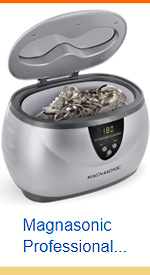

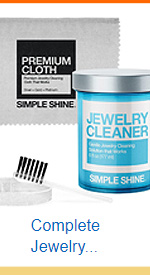
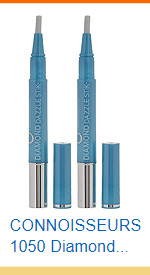
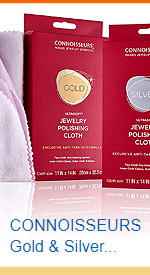
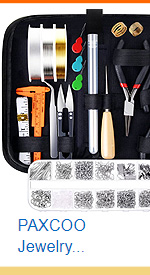
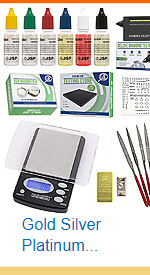
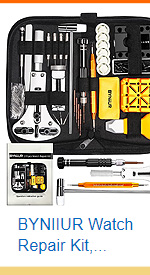
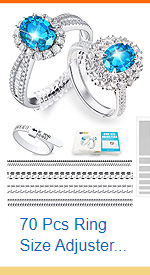
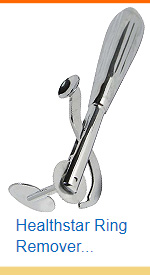
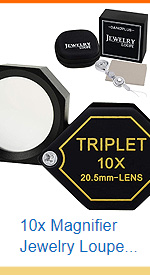
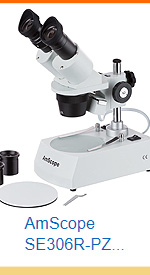




Leave a comment